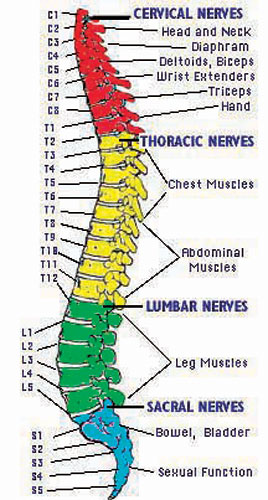.jpg)
Have you ever experienced pain in your back? Maybe a sharp twinge after bending down to lift a pen off the floor? Or perhaps a coughing spell that left you with a back ache? Unfortunately, back injuries are very common. Nearly 80% of Americans will experience back pain at some time in their lives and 25% just within the past three months. Because it affects so many, exorbitant costs are incurred, such as high medical expenses, decreased work productivity and lost income.
In most cases, back pain is mild and disappears on its own. For some it may return and become chronic, affecting one’s quality of life.
Back pain can be classified into three types. Acute pain lasts less than three months, recurrent pain disappears and then returns and chronic pain lasts longer than three months.
What causes back pain?
There are several conditions that may contribute to back pain.
Degenerative disc disease, a type of osteoarthritis of the spine (neck and back) that comes with aging.
Spinal stenosis, a narrowing within the vertebrae of the spinal column (in the neck or back) that results in pressure on the spinal cord or nerves.
Fractures.
Herniated disk, a portion of the disk protrudes, or pushes out and presses spinal nerves.
Osteoarthritis of the spine (neck and back), deterioration of the bone caused by aging.
Osteoporosis, low bone density, which increases one’s risk for a fracture.
Tumors of the spine.
Your spine is comprised of 33 vertebrae stacked on top of each other. Between each vertebrate are spongy cartilage disks providing cushioning. Muscle and ligaments attach to the spine to allow for support and mobility. The spinal cord runs through the vertebral column with major nerves passing through the vertebrae at each level. Any problem with a vertebra can cause impingement or damage to its associated nerve. For example, the common condition called “sciatica” is caused by impingement of the sciatic nerve by a vertebral disc at the L4-L5 level of the spine. This impingement can cause pain, numbness, tingling and weakness.
How can a physical therapist help?
A physical therapist can perform a thorough evaluation to assess the possible causes of your back pain. A typical evaluation includes: a review your medical history, pain assessment, examination of posture, muscle strength and flexibility and testing and assessment of joint mobility. Referrals to an MD for further evaluations/tests are made when indicated. Once the evaluation is complete, the therapist will review the results and design a special individualized program tailored to your needs. The treatments may include the use of:
Modalities for pain reduction such as ice, heat and electrical stimulation.
Manual therapy, including spinal manipulation and soft tissue mobilization.
Body mechanics training for proper techniques for sleeping, lifting, bending, sitting and performing activities of daily living. There are specially trained therapists who will come to the workplace to evaluate and educate the workers on proper body mechanics and ergonomics to minimize work related injuries.
Postural training to improve sitting and standing posture.
Exercises to increase muscle strength, flexibility, as well as core strengthening for trunk stability to support the spine.
Designing a home exercise program for the patient to be continued once the patient is discharged from therapy.
While you might think that bed rest would alleviate the pain from a back injury, studies have shown the opposite. Bed rest for more than a day can actually slow your recovery. It is better to stay active, but not to overdo it. When lifting a heavy object, position yourself right in front of it and bring the object close to your body. Bend your knees so your legs, and not your back, bear the weight. Avoid twisting movements. Instead turn your feet and not your waist.
Now that we are heading into the winter with snowstorms forecasted, it is important to be careful when shoveling snow. Make sure to keep your back straight while lifting the snow, and avoid twisting while shoveling. Use a shovel that isn’t too short to minimize the amount of bending while lifting the snow. Take frequent breaks, stand straight and walk. Remember, use good body mechanics, stay warm and enjoy.
Renee Fishweicher DPT PT MS, is the owner of Elite Care Physical therapy Rehab. P.C. an outpatient physical therapy office. Email address: elitecare_optonline.net. For more information, go to www.elitecarerehab.com.
By Renee Fishweicher











